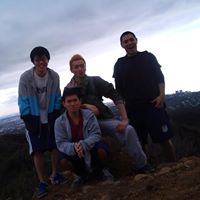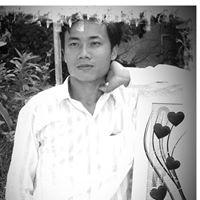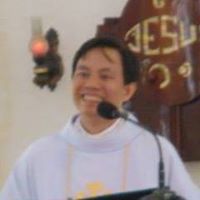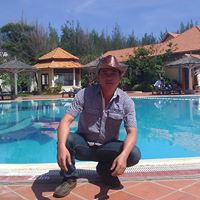Bao Gia Le
age ~73
from Orange, CA
- Also known as:
-
- Bao Loan Le
- Bao Loan Tran Le
- Bao G Le
- Bao Gia Trinh
- Gia Le Bao
- Gia Le Lebao
- Brian Le
- Baogia Le
Bao Le Phones & Addresses
- Orange, CA
- Villas, NJ
- Grayland, WA
- Bath, NC
- Santa Ana, CA
- Austell, GA
- Huntington Beach, CA
- Torrance, CA
- Riverside, CA
- Garden Grove, CA
- Anderson Island, WA
- Apple Valley, CA
- Hemet, CA
Vehicle Records
-
Bao Le
view source -
Address:407 Lisabeth Cmn, Santa Ana, CA 92703
-
VIN:1N4BA41E48C809282
-
Make:NISSAN
-
Model:MAXIMA
-
Year:2008
Resumes

Ligting And Electrical Engineer
view sourceIndustry:
Architecture & Planning
Work:
Ldb
Ligting and Electrical Engineer
Ligting and Electrical Engineer

Bao Le
view source
Bao Chau Le
view source
Freelance Photographer
view sourceWork:
Freelance Photographer

Bao Le
view source
Bao Le
view source
Summer Intern
view sourceWork:
Koastal Eco Industries Pte
Summer Intern
Summer Intern
Us Patents
-
Cam And Hinge Mechanism For Angular Insertion
view source -
US Patent:6351373, Feb 26, 2002
-
Filed:May 2, 2000
-
Appl. No.:09/563249
-
Inventors:Bao G. Le - Orange CA
Derek T. Nguyen - Foothill Ranch CA -
Assignee:Gateway, Inc. - North Sioux City SD
-
International Classification:G06F 116
-
US Classification:361683, 361681, 361682, 361686, 16334, 16335, 16340, 16341, 16342, 16325, 16327, 248183, 248917, 248923, 403119, 403120, 403121, 403146
-
Abstract:A hinge engages a cam such that the hinge first rotates relative to the cam, then linearly engages the cam. Preferably, the hinge includes a guiding post that rides along a raised arched surface on the cam during the rotary motion of the hinge. Linear motion between the hinge and the cam preferably begins when the guiding post rides off the end of the arched surface. The rotary motion of the hinge is constrained by one or more engagement assemblies. In a preferred embodiment, one or more cams are mounted on a receiving structure and one or more hinges are mounted in corresponding locations on a detaching structure, where said detaching structure is physically separable from the receiving structure. Engagement between the one or more cams and the one or more corresponding hinges allows the detaching structure to first rotate relative to, then linearly engage, the receiving structure, providing for reliable blind mating between connectors on the detaching structure and connectors on the receiving structure.
-
Column Grid Array For Flip-Chip Devices
view source -
US Patent:6449840, Sep 17, 2002
-
Filed:Sep 29, 1998
-
Appl. No.:09/163137
-
Inventors:Bao Le - Santa Ana CA
Chris M. Schreiber - Lake Elsinore CA -
Assignee:Delphi Technologies, Inc. - Troy MI
-
International Classification:H01R 4300
-
US Classification:29852, 29825, 29829, 29830, 29840, 29846, 29847, 228165
-
Abstract:A method for providing C4-type bumps which are higher than conventional C4 bumps. A dielectric substrate is copper cladded on both sides. At each prospective bump location, a via is laser ablated through the cladded substrate. A copper core is deposited within the vias to thereby connect the two claddings. A photoresist is applied to both claddings, a photomask having a predetermined exposure pattern is placed over the claddings, the photoresist is exposed to ultraviolet (UV) light to thereby polymerize in the exposed areas thereof, and the resulting photoresist image is developed by use of a developer solution to wash away of the unpolymerized areas of the photoresist. Now, the photoresist image provides a retainer wall spaced from, and circumferentially around, the vias. Next, a lead-tin solder alloy is electroplated, such as by a lead-tin fluoroborate bath, at the vias into the volumes defined by the retainer wall at each end of the vias. Now, the photoresist is stripped, such as by an alkali stripper, from the cladding, leaving behind a pair of solder deposits at each via.
-
Computer Component Retention Tray
view source -
US Patent:6467858, Oct 22, 2002
-
Filed:Dec 23, 1999
-
Appl. No.:09/471737
-
Inventors:Bao G. Le - Orange CA
Derek T. Nguyen - Foothill Ranch CA
Lisa Luong - Trabuco Canyon CA -
Assignee:Gateway, Inc. - N. Sioux City SD
-
International Classification:A47B 8100
-
US Classification:3122232, 312333
-
Abstract:A spring-loaded disk drive retention tray comprises a first and a second plate moveably engaged to each other. The plates are kept in a closed position relative to each other via tension from a spring. A hard disk drive housing can be inserted into a first edge of the tray, and pressure to insert a second edge results in the opening of the first and second plate relative to each other such that the disk drive housing can be fully inserted into the retention tray. Once fully inserted, the two plates return to their closed position, and posts integral to the retention tray mechanically lock the hard disk drive housing to the retention tray via insertion of the posts into screw holes located on the hard disk drive housing. The disk drive assembly comprising the disk drive housing and the retention tray can then be inserted into receiving rails in a computer system chassis, and locked into place via mechanical abutments. The disk drive assembly can be removed from the computer system chassis be manually overriding the mechanical abutments, and the disk drive housing can be removed from the retention tray by manually separating the two plates into the open position.
-
Stress Relief Bend Useful In An Integrated Circuit Redistribution Patch
view source -
US Patent:6617510, Sep 9, 2003
-
Filed:Sep 18, 2001
-
Appl. No.:09/955215
-
Inventors:Chris M. Schreiber - Lake Elsinore CA
Bao Le - Santa Ana CA
Eric Dean Jensen - Irvine CA -
Assignee:Delphi Technologies, Inc. - Troy MI
-
International Classification:H05K 506
-
US Classification:174 522, 174251, 174254, 174260, 174261, 361773, 361776, 257669, 257674
-
Abstract:A metallic or an electrical trace having a terminus and a stress relief bend formed in the trace adjacent the terminus. The electrical trace may have a portion carried by a flexible substrate to form a flexible circuit. The stress relief bend may be free floating and extend from the flexible substrate or may be encapsulated by the flexible substrate. The electrical circuit and the flexible circuit each have a generally planar portion extending in the X and Y axis, with the stress relief bend projecting into the Z axis. This allows electrical traces to be spaced with a very narrow pitch because the stress relief bend does not consume any valuable real estate on the flexible circuit or the substrate to which the electrical trace is applied.
-
Device Retention Apparatus
view source -
US Patent:6671180, Dec 30, 2003
-
Filed:Oct 22, 2001
-
Appl. No.:10/028229
-
Inventors:Bao Gia Le - Orange CA
Derek Nguyen - San Clemente CA
David R. Davis - Jefferson SD
Allan L. Klink - Sioux City IA -
Assignee:Gateway, Inc. - Poway CA
-
International Classification:H05K 716
-
US Classification:361726
-
Abstract:The present invention is directed to a device retention apparatus. A method of retaining an electronic device in a housing may include engaging a first device side of an information handling system device against a first housing side of a housing suitable for retaining an information handling system device. The housing includes the first housing side, a second housing side, and a third housing side, wherein the second housing side is oriented generally opposing the first housing side, and the third housing side oriented is generally perpendicular to the first housing side and the second housing side. The information handling system device includes a first device side, a second device side, and a third device side. The information handling system device is rotated about the engaged portion of the information handling system device with the housing, so that the information handling system device is secured to the first housing side, second housing side and third housing side.
-
Emi/Rfi Shield For Adjacent Devices
view source -
US Patent:6728115, Apr 27, 2004
-
Filed:Apr 19, 2002
-
Appl. No.:10/126115
-
Inventors:Bao G. Le - Orange CA
Derek T. Nguyen - San Clemente CA -
Assignee:Gateway, Inc. - Poway CA
-
International Classification:H05K 700
-
US Classification:361816, 361818, 361800, 174 51, 174 35 R
-
Abstract:A string with conductive filaments is placed across an opening of an electronic cage at a point between two devices to be installed in the electronic cage. A cage for a personal computer is positioned within the personal computer and the string is positioned at a point to fill a gap between two drives when installed in the cage. The string comprises a twisted metal wire with multiple conductive filaments woven into the wire. The filaments are of sufficient length to contact both drives.
-
Movable Standoff For Mounting A Circuit Board
view source -
US Patent:6813161, Nov 2, 2004
-
Filed:May 9, 2002
-
Appl. No.:10/142040
-
Inventors:Bao G. Le - Orange CA
Derek T. Nguyen - San Clemente CA
David R. Davis - Jefferson SD
Allan L. Klink - Sioux City IA -
Assignee:Gateway, Inc. - Poway CA
-
International Classification:A05K 500
-
US Classification:361758, 361801, 174138 G
-
Abstract:An apparatus and method for supporting a circuit board within a computer chassis is disclosed. The apparatus comprises a standoff support mounted in a channel so that the standoff can be positioned along the length of the channel by moving or sliding the standoff within the channel. This movable standoff facilitates the mounting of a variety of circuit boards within the same computer chassis.
-
Movable Standoff For Mounting A Circuit Board
view source -
US Patent:7151677, Dec 19, 2006
-
Filed:Apr 20, 2004
-
Appl. No.:10/828038
-
Inventors:Bao G. Le - Orange CA, US
Derek T. Nguyen - San Clemente CA, US
David R. Davis - Jefferson SD, US
Allan L. Klink - Sioux City IA, US -
Assignee:Gateway Inc. - Irvine CA
-
International Classification:H05K 7/02
H05K 7/04 -
US Classification:361807, 361810, 361760, 174138 D, 174138 G
-
Abstract:An apparatus and method for supporting a circuit board within a computer chassis is disclosed. The apparatus comprises a standoff support mounted in a channel so that the standoff can be positioned along the length of the channel by moving or sliding the standoff within the channel. This movable standoff facilitates the mounting of a variety of circuit boards within the same computer chassis.
Medicine Doctors

Bao Q. Le
view sourceSpecialties:
Family Medicine, General Practice
Work:
Bao Q Le MD
2944 E Anaheim St, Long Beach, CA 90804
5625995777 (phone), 5624332886 (fax)
2944 E Anaheim St, Long Beach, CA 90804
5625995777 (phone), 5624332886 (fax)
Education:
Medical School
Univ of Hue, Fac De Med, Hue, Vietnam (942 02 Eff 1983)
Graduated: 1967
Univ of Hue, Fac De Med, Hue, Vietnam (942 02 Eff 1983)
Graduated: 1967
Conditions:
Allergic Rhinitis
Contact Dermatitis
Diabetes Mellitus (DM)
Disorders of Lipoid Metabolism
Hypertension (HTN)
Contact Dermatitis
Diabetes Mellitus (DM)
Disorders of Lipoid Metabolism
Hypertension (HTN)
Languages:
English
Vietnamese
Vietnamese
Description:
Dr. Le graduated from the Univ of Hue, Fac De Med, Hue, Vietnam (942 02 Eff 1983) in 1967. He works in Long Beach, CA and specializes in Family Medicine and General Practice. Dr. Le is affiliated with College Medical Center and St Mary Medical Center.

Bao H. Le
view sourceSpecialties:
Cardiovascular Disease, Interventional Cardiology
Work:
Scott & White ClinicBaylor Scott & White Clinic
800 Scott And White Dr FL 3, College Station, TX 77845
9792074200 (phone), 9792074353 (fax)
Scott & White Clinic Cardiology Rock Prairie
800 Scott And White Dr FL 4, College Station, TX 77845
9792074600 (phone), 9792074615 (fax)
800 Scott And White Dr FL 3, College Station, TX 77845
9792074200 (phone), 9792074353 (fax)
Scott & White Clinic Cardiology Rock Prairie
800 Scott And White Dr FL 4, College Station, TX 77845
9792074600 (phone), 9792074615 (fax)
Languages:
English
Spanish
Spanish
Description:
Dr. Le works in College Station, TX and 1 other location and specializes in Cardiovascular Disease and Interventional Cardiology. Dr. Le is affiliated with Baylor Scott & White Health Memorial Hospital-Temple and Baylor Scott & White Hospital-College Station.

Bao Quoc Le, Long Beach CA
view sourceSpecialties:
Family Physician
Address:
2944 E Anaheim St, Long Beach, CA 90804
Googleplus

Bao Le
Work:
Andretti Indoor Karting and Gaming - Game Floor Attendant (2011)
Chick-fil-A - Cashier (2009-2010)
Chick-fil-A - Cashier (2009-2010)
Education:
Georgia Institute of Technology - Biomedical Engineering
Tagline:
The one and only

Bao Le
Work:
Naviron, Inc - Recruiting Manager (2009)
Volt Workforce Solutions - Professional Search Recruiter (2008-2009)
Volt Workforce Solutions - Professional Search Recruiter (2008-2009)
Education:
University of Phoenix - Business Management

Bao Le
Education:
University at Buffalo, The State University of New York, Goodpasture Christian School
About:
Unemployed

Bao Le
Work:
U.S. Army - CPT
Education:
Central Washington University

Bao Le
Education:
DH GTVT co so2 - CTGTTP
Tagline:
1 nguoi con cua vung dat Quang Binh. khoai khoai toan khoai

Bao Le
Work:
Cty cpsx nam hoa - Thong ke

Bao Le
About:
Hi, I'm Bao.
Tagline:
Herro!

Bao Le
Education:
Virginia Commonwealth University
Plaxo

Bao Le Duc
view sourceI'm research student at France Télécom and committer at Castor.org

Huynh Le Bao Khuyen
view source
Bao Le
view sourcePharmacy District Manager at Rite Aid Corporation Past: Pharmacy District Manager at Rite Aid Corporation, Pharmacy District Manager at Rite Aid...

Bao le
view sourceApex Gold Pty
Youtube
Classmates

Bao le
view sourceSchools:
North Springfield Elementary School Springfield VA 1998-2002, Holmes Middle School Alexandria VA 2002-2005
Community:
Diana O'keefe, Russell Davis, Barbara Gaitley, Lisa Salinas, Michael Denny

Bao le
view sourceSchools:
Mansfield-Summit High School Mansfield TX 2001-2005

North Springfield Element...
view sourceGraduates:
Bao le (1998-2002),
Kane Sabandith (1984-1989),
Demi Skipper (1996-2000),
Matt Kingham (1976-1979),
Imran MacMillan (1997-2001)
Kane Sabandith (1984-1989),
Demi Skipper (1996-2000),
Matt Kingham (1976-1979),
Imran MacMillan (1997-2001)

Holmes Middle School, Ale...
view sourceGraduates:
Bao le (2002-2005),
Michael Andrew Rivera (1992-1995),
Abdiwali Omar (1990-1994),
Amanda Forson (1991-1994),
Lizabeth Behenna (1973-1975)
Michael Andrew Rivera (1992-1995),
Abdiwali Omar (1990-1994),
Amanda Forson (1991-1994),
Lizabeth Behenna (1973-1975)

Mansfield-Summit High Sch...
view sourceGraduates:
Channing Griffin (2001-2005),
Bao le (2001-2005),
Emily Onderi (2005-2009),
Khara Caudillo (2000-2004)
Bao le (2001-2005),
Emily Onderi (2005-2009),
Khara Caudillo (2000-2004)

Graham Middle School, Mou...
view sourceGraduates:
Bao Le (1979-1980),
Shari Hiatt (1970-1972),
Edward Mcdonnell Jr (1979-1981),
Rebecca Razavi (1978-1980),
Fanny Corny (1991-1994)
Shari Hiatt (1970-1972),
Edward Mcdonnell Jr (1979-1981),
Rebecca Razavi (1978-1980),
Fanny Corny (1991-1994)

Bao Nguyen Le
view source
Bao Hoang Le
view source
Duy Bao Le
view source
Quoc Bao le Ngoc
view source
Le Bao le Bao
view source
Tan Bao Le
view source
Hoai Bao Le
view source
Duy Bao Le Huu
view sourceFlickr
Myspace
Get Report for Bao Gia Le from Orange, CA, age ~73















